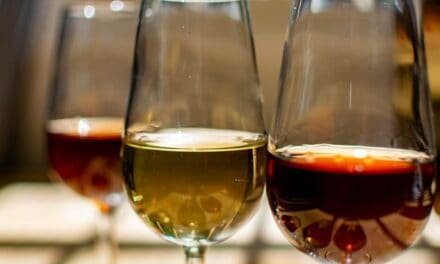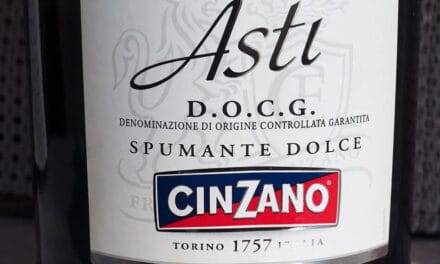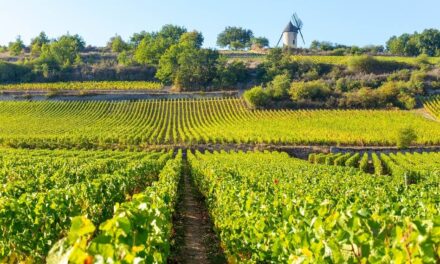Sparkling wine is wine that is carbonated and thus contains carbon dioxide (CO2). This CO2 forms fine bubbles that create a fizzy drinking experience. Sparkling wines can range from bone dry to sweet and offer many different aromas. Typically, they are relatively light with a low level of alcohol.
In the following paragraphs, we will discuss the most famous types of sparkling wine and how they are made:
- Prosecco
- Lambrusco
- Sekt
- Champagne
- Cava
- Crémant
- Asti Spumante / Moscato d’Asti
- Franciacorta
- Brachetto
- New World Sparkling Wines
To start off, let us look into the history of sparkling wines and the different methods to produce them first.
WHICH SPARKLING WINE IS MOST POPULAR?
While most vintners and sparkling wine lovers might proclaim that their wines are the most popular, the sales numbers are clear: Prosecco is the world’s most popular sparkling wine, with about 550 million bottles sold per year. Lambrusco is second and Sekt third. Surprisingly, Champagne only takes the fourth rank.
Sparkling Wines by Sales Numbers
THE HISTORY OF SPARKLING WINE
The history of sparkling wines began thousands of years ago. The ancient Romans and Greek observed wines that contained bubbles. But they neither understand where the bubbles came from nor did they deliberately create them. For a long time, sparkling wines were considered faulty. And as the bottles were under pressure and had the tendency to explode occasionally, they were also a hazard for vintners.
In the 17th century, the first methods to create sparkling wines purposely were invented. It’s not clear who was the very first to produce them. A widespread myth contributes to their invention of Pierre Perignon, a French monk. According to common belief, he created the “Méthode Champenoise” that winemakers today still use to produce sparkling wines.
According to an alternative birth myth, the British are the inventors of sparkling wine. More specifically, it says that the physician Christopher Merrett presented a paper to the Royal Society that explained the techniques to add bubbles to wine. And Merrett did so 30 years before Dom Perignon developed his production method.
No matter who really is the inventor, sparkling wines spread over Europe quickly. Over the centuries, vintners in different regions created other methods to make them. Most of them are still in use today.
HOW IS SPARKLING WINE MADE?
The production of sparkling wine consists of two processes: Making still wine and proceeding the still wine to sparkling wine.
The initial production of still wine is similar to making table wine with a few distinctions. The vintners must harvest the grapes for sparkling wine very early in the year when the grapes are high in acidity but low in sugar. Especially those who aim to make high-class wines do that manually. After the harvest, they crush and ferment the grapes to make the base wine. It is not unusual for vintners to blend different wines to compose the perfect base wine.
The second process is what distinguishes sparkling wine from table wine. It’s another fermentation phase that results in what sparkling lovers enjoy most: delicate bubbles. Vintners use various methods to perform this second fermentation.
The Méthode Champenoise (Traditional Method)
The “Méthode Champenoise” is the oldest method to make sparkling wine. As the name suggests, it originated from the French Champagne region. And it is still the way to go for Champagne producers. Vintners outside the Champagne region use it as well, but they typically call it “Traditional Method” or “Bottle Fermentation”.
The latter alternative name hints at the actual technique that winemakers use: They fill the base wine into bottles and add yeast and sugar. These ingredients start the second fermentation. While the yeast consumes the sugar, it produces CO2. And as this CO2 cannot escape the bottle, it creates the bubbles that sparkling wine enthusiasts love.
When the second fermentation comes to an end, the sparkling wines typically age further in the bottles. In some cases, they lay on the lees (the dead yeast cells) for several years.
After that, the vintners riddle the bottles to move the dead yeast cells to the bottlenecks. Then, they remove them while keeping the CO2 inside the bottle. That might happen either manually or automatically by freezing the bottleneck and getting the ice plug containing the yeast cells out of it. This step is called “disgorging”.
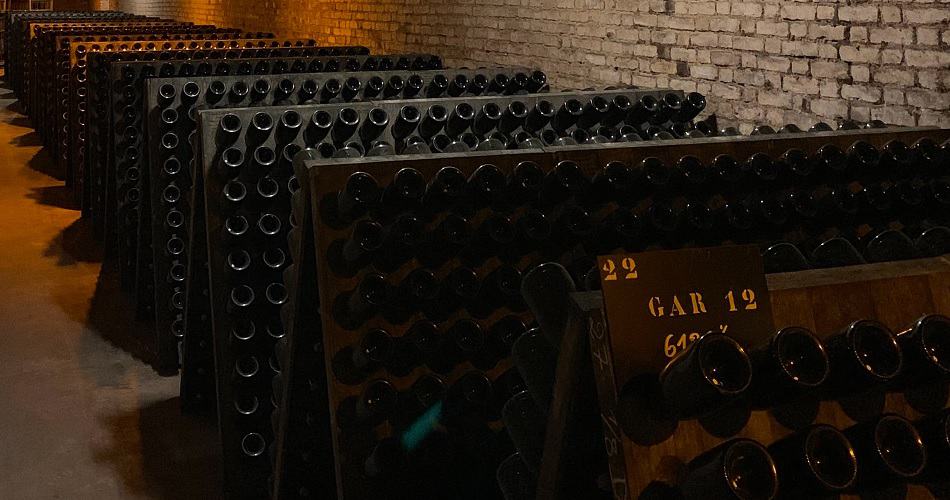
Champagne Bottles Aging in a Cellar
French wine laws force Champagne producers to use the Traditional Method. But winemakers in other countries also use it, given they want to make high-quality sparkling wines.
The Transfer Method
The “Transfer Method” is a simplified version of the Traditional Method. From the harvest of the grapes to the bottle fermentation, it is identical.
But after the end of the fermentation and aging period, the Transfer Method differs. Instead of riddling and disgorging the bottles, winemakers empty them and transfer the wine into pressurized steel tanks. This transfer gives the method its name. They then filter out the dead yeast cells, perform the dosage, and finally bottle the sparkling wine.
As the filtering and the dosage happen in a bulk process, the Transfer Method is much less time-consuming and cheaper than the Traditional Method, which requires the repetition of the process for each bottle. Many winemakers in the New World, especially in Australia and New Zealand, use this production method.
The Charmat Method
The “Charmat Method” is one of the most-used methods to make sparkling wines. This method was developed by an Italian named Federico Martinotti at the end of the 19th century. That is why vintners also refer to it as the “Martinotti Method” or the “Italian Method”. The name “Charmat Method” goes back to the Frenchman Eugène Charmat, who improved it and patented it under his name about ten years later.
In the 1930s, Antonio Carpene refined the process entirely to adapt it to the Glera varietal, which Italian winemakers use to make Prosecco.
Instead of bottles, vintners use stainless steel tanks for the second fermentation. They fill the wine in, add yeast and sugar, and close the tank. Next, they put the tanks under pressure so the fermentation’s carbon dioxide stays in the wine.
Vintners do not let sparkling wines age further after fermentation. Instead, they immediately perform the final steps of the production process: filtering, dosage, and bottling.
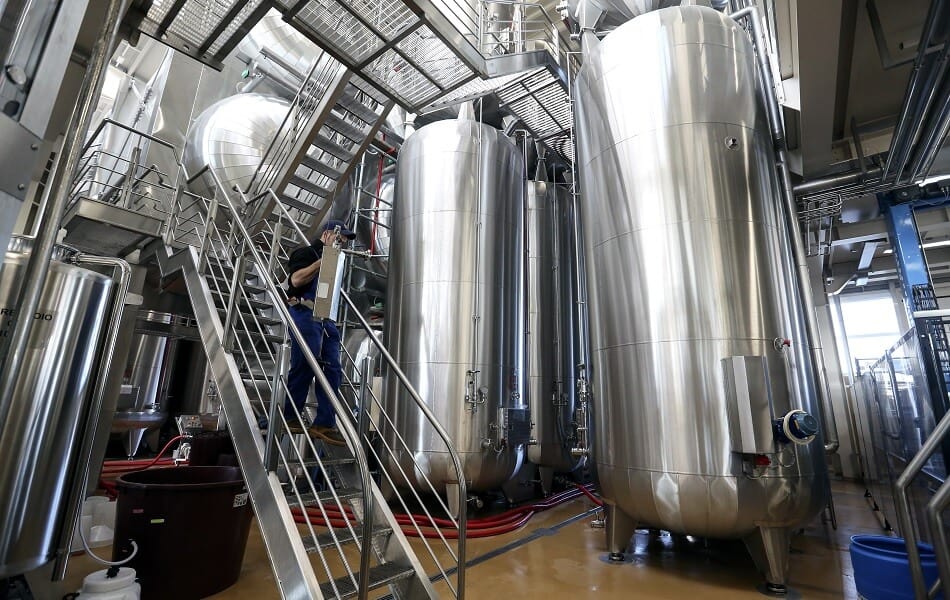
Steel Tanks for Sparkling Wine Production
The Charmat Method is faster and less costly than the Traditional Method, and it is an excellent way to bulk-produce sparkling wines. However, it also brings out the aromas of the Glera grapes better than bottle fermentation.
The Continuous Method
The “Continuous Method” is a rather uncommon way to make sparkling wine. The Russians invented this technique; thus, it is also called the “Russian Method”.
Vintners who follow the Continuous Method also use steel tanks for the second fermentation. But instead of filling the wine must into a tank and letting it ferment until it has the optimal level of alcohol and CO2, they move them through different tanks. In the first stages of this journey, they continuously add yeast, hence the method’s name. In the following stages, the wine gets in contact with oak chips. The yeast cells accumulate on these wood chips that impart toasty flavors to the wine. Finally, the last set of tanks filters the wine to remove the remaining sediment before winemakers bottle it.
Today, only a couple of wineries in Central and Western Europe use the Continuous Method.
The Asti Method
The “Asti Method” is a unique way to make sparkling wine. Unlike most methods we have discussed so far, wines made with the Asti Method undergo only one fermentation phase.
After the pressing of the grapes, the vintners transfer the wine must into stainless steel tanks. Then, they lower the temperature inside the tank close to the freezing point. That prevents the must from fermenting and basically sends it to sleep.
Vintners do that because, unlike Champagne producers, they make their sparkling wines all year long. So whenever they want to process a batch of must, they raise the temperature inside one of the tanks to start the fermentation.
Typically, the Asti Method is used to produce sweet sparkling wines. So the winemakers do not allow all of the sugar in the must to ferment. After stopping the fermentation, they filter out the remaining yeast and bottle and cork the sparkling wine.
As the name suggests, the Asti Method is preferred by vintners who make Asti Spumante and Moscato d’Asti.
The Ancestral Method
The “Ancestral Method” (French: Méthode Ancestrale) is one of the oldest methods of making sparkling wine. It is also special for several reasons.
Like the Asti Method, it does not include a second fermentation phase. Instead, vintners bottle the wine must even before the first fermentation is finished. By doing that, they take a risk: If they do it too early, there will be too much sugar left in the must. And when fermenting inside the bottle, it can create too much carbon dioxide and too much pressure that causes the bottle to explode. On the other hand, bottling the must too late may result in too little CO2 and too low pressure. Ultimately, this can lead to a flat wine that lacks exciting fizziness.
However, when choosing the right moment for transferring the wine into bottles, vintners can create excellent sparkling wines with very fine bubbles. Often, these wines contain some residual sugar, so they are slightly sweet. And as neither filtering nor disgorging happens, they can also have some sediment that makes them look cloudy.
The Carbonation Method
Finally, the “Carbonation Method” is the easiest and least expensive method to produce sparkling wine. When using this method, vintners do not let their wine undergo a second fermentation method either. Instead, they inject carbon dioxide into their wines artificially. Afterward, they bottle them under pressure. You could compare this method to carbonizing water with a SodaStream device.
While the Carbonation Method is the least expensive method, it also produces the lowest-quality sparkling wines. Typically their bubbles do not last very long and dissipate quickly once a bottle is open. Thus, many winemakers consider this method inferior. Nevertheless, it is widespread across the industry.
HOW TO SERVE SPARKLING WINE
To provide the best drinking experience for yourself and your guests, you must serve sparkling wine appropriately. The right glass and temperature are crucial, and so is the serving portion.
But the first challenge when it comes to serving sparkling wine is opening the bottle. Make sure to follow these guidelines:
- Do not pop the cork. Although it has some potential to create a show effect, it causes more harm than good. Popping the cork might cause the sparkling wine to overflow, so you lose a lot of it. And even worse, a flying cork might hurt a bystander.
- Never point the bottle at a person to reduce the risk of injuries.
- Remove the wire cage, and twist the bottle in one direction while holding the cork with your other hand. Make sure not to lose grip on it while pulling it out gently.
- Have a glass nearby so overflowing wine does not end on the carpet.
- Hold the glass at an angle when pouring to reduce the risk of overflowing.
What Is the Right Glass for Sparkling Wine?
The optimal glass for sparkling wine is a flute. Its long narrow bowl prevents the bubbles from escaping too quickly, so the wine stays fresh longer. The long stem allows you to keep your hand away from the bowl not to heat the wine.
A tulip-shaped glass is a proper alternative. It has a slightly wider bowl than a flute. Thus, it allows more complex sparklers to showcase all of their aromas. It has a disadvantage, though: It causes the wine’s delicate bubbles to disappear faster.
No matter which glass you choose, do not fill it completely. Warm sparkling wine is not really enjoyable, and smaller portions increase the chance that your guests finish it before it gets too warm. Limit the serving to about 3/4 of the glass.

Riedel Vinum Champagne Flutes (Set of 2)
$64.97
from: Wine.com
What is the Right Serving Temperature for Sparkling Wine?
Sparkling wine should be chilled. When it is too warm, its acidity becomes dominant and overpowers the fruity aromas.
The best temperature for white sparklers is between 43 and 46°F (6-8°C). Vintage Champagne is an exception. Aim for 46-50°F (8-10°) for these precious wines. When serving red styles, you can go even higher. They are best between 50 and 54°F (10-12°C).
You should not serve sparkling wine on ice, especially if it is a high-quality wine. As soon as the ice melted, it would dilute the wine’s aromas. Better use wine charms or pre-chill the glasses.
Should You Decant Sparkling Wine?
The vast majority of sparklers should not be decanted. If you let them sit in a decanter, they will heat up, lose their fizz, and become flat and dull.
There is only one exception: old vintage Champagne. These prestigious styles have complex aromas and thus need a bit of air to release them. Make sure to limit the decanting to 30 minutes, though.
THE 9 (+1) TYPES OF SPARKLING WINE YOU SHOULD KNOW
Depending on the production processes, sparkling wines can be of very high or relatively low quality. You can find them in all colors, qualities, and flavors.
The following sparkling wines are the most famous among them.
Prosecco
Prosecco is a high-quality sparkling wine that is subject to strict wine laws. It comes from the Italian regions Friuli-Venezia Giulia and Veneto. Although the name Prosecco appears in documents from the 16th century, the sparkling wine as we know it today is a product of the 1960s.
Although it’s relatively young, Prosecco is by far the world’s most-sold sparkling wine. Italian vintners delivered more than 550 million bottles to their customers in 2020. DOC wines made about 450 million, while DOCG wines contributed around 100 million bottles.
Local wine laws force winemakers to use at least 85% Glera grapes to make Prosecco. The rest can be other varietals like Chardonnay or Pinot Grigio. In any case, they must cultivate all grapes in the formerly mentioned regions. Besides the varietals, Italian laws also mandate vintners to follow the Charmat Method. As this method is less labor-intensive than the Traditional Method, Prosecco is less expensive than Champagne.
Typically, the Italian sparklers are slightly sweeter and less strong than their French counterparts. They offer fruity and flowery aromas. Until 2020, all Prosecco styles had to be white. But due to the vintners’ initiative, regulations have been adjusted to allow the production of pink variations. So by the end of the year, you can find the first-ever pink Prosecco on store shelves.
- type: white, sparkling
- origin: Veneto, Italy
- varietal: Glera
- alcohol: 11.0%
- type: white, sparkling
- origin: Veneto, Italy
- varietal: Glera
- alcohol: 11.0%
Fantinel One and Only Prosecco Brut 2017
- type: white, sparkling, Vintage
- origin: Friuli-Venezia Giulia, Italy
- varietal: Glera
- alcohol: 12.0%
La Gioiosa Prosecco Rose Millesimato 2020
- type: rosé, sparkling, Vintage
- origin: Veneto, Italy
- varietal: Glera, Pinot Noir
- alcohol: 11.0%
- type: rosé, sparkling, Vintage
- origin: Veneto, Italy
- varietal: Glera, Pinot Noir
- alcohol: 11.0%
- type: rosé, sparkling, Vintage
- origin: Friuli-Venezia Giulia, Italy
- varietal: Glera, Pinot Noir
- alcohol: 11.0%
Lambrusco
Another popular sparkling wine from Italy is Lambrusco. With about 400 million bottles sold annually, it is the second-most-sold type worldwide. The reason for this popularity is that the wine is both approachable and affordable. It does not have the best reputation, though. Lambrusco was considered the Italian red coke for a long time because many styles are very sweet.
It originates from two regions in the Northern part of the country: Emilia-Romagna and Lombardy. Archaeological evidence proves that Lambrusco grapes were cultivated hundreds of years before Christ’s birth in these regions. Today, vintners know more than 60 single varietals that belong to the Lambrusco family. Lambrusco Salamino is the most widespread of them.
Italian wine laws recognize four different DOC regions in this area. Vintners in these regions use different varietals and produce different types of Lambrusco. Usually, they follow the Charmat Method to do so, but some also stick to the Traditional Method.
Most wines share one characteristic that makes them special compared to other sparkling wines: They are red. Also, they are semi-sparkling, low in alcohol, and have fruit-forward flavor profiles. In terms of sweetness, Lambrusco wines cover a broad range, though. Some are very dry, and others are incredibly sweet. The best of them tend to be on the dry side, although you can find excellent sweet styles.
Cleto Chiarli Lambrusco Di Sorbara Vecchia Modena 2020
- type: red, sparkling, Vintage
- origin: Emilia-Romagna, Italy
- varietal: Lambrusco
- alcohol: 11.0%
- type: red, sparkling
- origin: Emilia-Romagna, Italy
- varietal: Lambrusco
- alcohol: 12.0%
Venturini Baldini Marchese Manodori Lambrusco
- type: red, sparkling
- origin: Emilia-Romagna, Italy
- varietal: Lambrusco
- alcohol: 12.0%
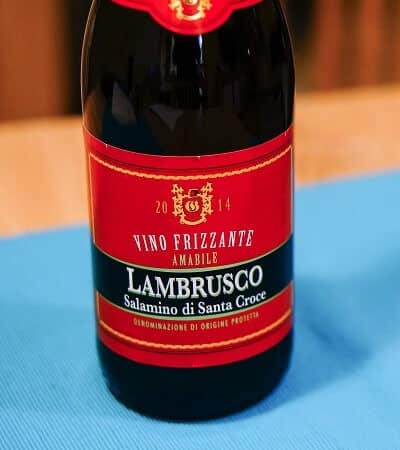
Bottle of Sweet Lambrusco Sparkling Wine
Sekt
Sekt is the German version of sparkling wine and it’s widely popular in Germany. Most of the around 360 million bottles that are produced each year are consumed within the country.
It is fair to say that Sekt is an offspring of Champagne. Many German vintners traveled to the Champagne region in the early 19th century to learn how the French produce their great sparklers. While some stayed to found wineries there, others returned and laid the foundation for the German sparkling wine industry.
After World War II brought the industry to its knees, the rebuilding efforts resulted in a wide variety of Sekt styles. The vast majority of it is produced for domestic customers.
Nowadays, Sekt comes as red, white, or rosé sparkling wine, and it can range anywhere from sweet to bone dry. According to German wine laws, there are four different quality brackets with more or less strict production rules. They regulate the permitted grapes and production methods. The best-quality styles are made from locally grown grapes and by following the Traditional Method. However, many producers prefer the Charmat Method to bulk-produce affordable Sekt.
Besides Germany, Austria is the second European country that produces Sekt. The Austrians have their own set of quality categories and production rules. Like their neighbors to the North, they make all types of Sekt ranging from cheap and simple to high-quality and expensive.
Fitz-Ritter Riesling Extra Trocken Sekt
- type: white, sparkling
- origin: Pfalz, Germany
- varietal: Riesling
- alcohol: 12.5%
Maximin Grünhaus Mosel Riesling Brut Sekt 2018
- type: white, sparkling, Vintage
- origin: Mosel, Germany
- varietal: Riesling
- alcohol: 12.5%
Bernhard Rheinhessen Riesling Brut Sekt 2015
- type: white, sparkling, Vintage
- origin: Rheinhessen, Germany
- varietal: Riesling
- alcohol: 12.0%
Champagne
Champagne is, without a doubt, the most famous sparkling wine in the world. However, it is not the most-sold. With about 245 million bottles, it takes only fourth place in sales numbers.
It comes from the French region with the same name: Champagne. For more than 300 years, winemakers produce these sparkling wines that typically are dry, acidic, and have fruity and mineral aromas.
They use different grapes to make Champagne, including Chardonnay, Pinot Noir, and Pinot Meunier. Although two of the three are red varietals, the final wine is always white.
To process the grapes, the French traditionally follow the Méthode Champenoise (also known as “Traditional Method”). Vintners who do not use this process actually may not call their wines “Champagne” because the method is mandated by law.
Champagne sparkling wines are of high quality with very fine bubbles. Due to the manual labor and the time it takes to make them, they are also among the most expensive sparkling wines in the world.
Laurent-Perrier Grand Siecle No. 24
- type: white, sparkling
- origin: Champagne, France
- varietal: Chardonnay, Pinot Noir
- alcohol: 12.0%
- type: white, sparkling, Vintage
- origin: Champagne, France
- varietal: Chardonnay, Pinot Noir
- alcohol: 12.5%
Armand de Brignac Ace of Spades Brut Gold
- type: white, sparkling
- origin: Champagne, France
- varietal: Chardonnay, Pinot Noir, Pinot Meunier
- alcohol: 12.5%
Cava
Cava is the most popular Spanish sparkling wine with around 215 million bottles sold in 2020. Winemakers and marketers often referred to it as the “Spanish Champagne” before the European Union protected the name Champagne so only French vintners could use it. The official name “Cava” roots in the Spanish word for cave. The reason is that in the early days of winemaking, Spanish sparkling wines aged in caves.
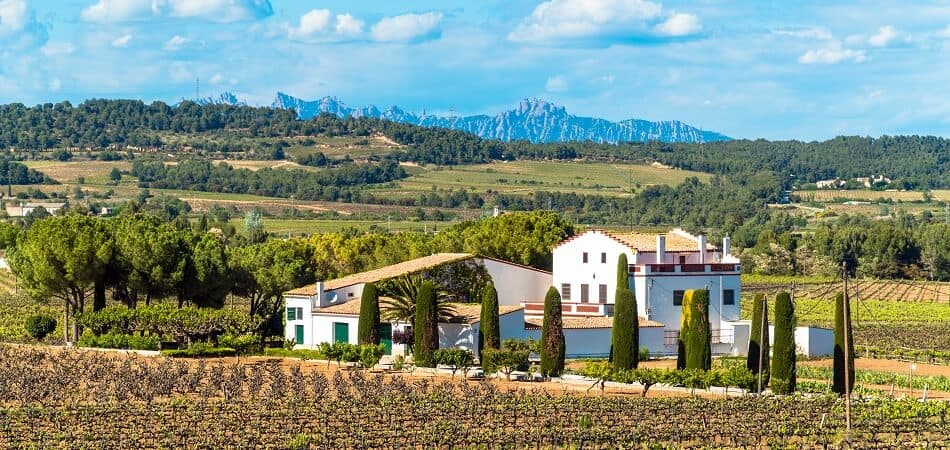
Vineyard in the Penedès Region in Catalunia, Spain
Vintners primarily use Macabeu, Parellada, and Xarel-lo grapes to produce Cava wines, although a couple of other varietals are allowed. They have to follow the Traditional Method, and their wines must be either white or rosé. In terms of sweetness, they have more freedom. Cava may be anything from sweet to dry. However, most styles are on the dry side of the spectrum.
Freixenet Cordon Negro Cava Brut
- type: white, sparkling
- origin: Catalonia, Spain
- varietal: Macabeo, Parellada, Xarel·lo
- alcohol: 11.5%
Vins el Cep Kila Cava Brut 2018
- type: white, sparkling, Vintage
- origin: Catalonia, Spain
- varietal: Macabeo, Parellada, Xarel·lo
- alcohol: 12.0%
- type: rosé, sparkling
- origin: Catalonia, Spain
- varietal: Trepat
- alcohol: 11.5%
Crémant
Crémant wines have a confusing history. Initially, the term Crémant referred to wines from the Champagne region that were less fizzy than the original sparklers. In other words, Crémant was the name of semi-sparkling Champagne wines. But since 1985, vintners from other regions may use the term as well. In return, they cannot use the term “Méthode Champenoise” for their production processes anymore.
Despite the deregulation of the name, Crémant wines still are subject to various rules. As of 2020, the French legislation recognizes eight Crémant AOC regions. Vintners who want to use this quality label must hand-pick grapes, use the Traditional Method, and let their sparkling wines age for at least nine months. Besides, each region has its own rules regarding the permitted grapes.
In comparison to Champagne, Crémant wines play a relatively small role in the sparkling wine market. In 2020, vintners sold a total of 75 million bottles.
Crémant wines can be white or rosé. Again, local rules limit the allowed styles in some regions. Typically, Crémant sparklers are off-dry to dry, have crisp acidity, and offer aromas of citrus fruits. While they are significantly cheaper than Champagne, they are of high quality as well.
- type: white, sparkling
- origin: Alsace, France
- varietal: Pinot Blanc, Pinot Gris, Pinot Noir, Riesling, Auxerrois
- alcohol: 12.0%
Bailly Lapierre Crémant de Bourgogne Reserve Brut
- type: white, sparkling
- origin: Burgundy, France
- varietal: Chardonnay, Pinot Noir
- alcohol: 12.0%
Victorine De Chastenay Rose Brut Crémant De Bourgogne
- type: rosé, sparkling
- origin: Burgundy, France
- varietal: Pinot Noir
- alcohol: 12.5%
Asti Spumante
Asti Spumante (or just “Asti”) is a white sparkling wine made in the Piedmont region in Northern Italy. Unlike Champagne or Prosecco, Asti is sweet, typically coming with fruity aromas and a relatively low alcohol content of not more than 9%.
Piedmont winemakers use the Asti Method to produce their wines from Moscato Bianco grapes. As Asti is a protected DOCG appellation, they have to follow very strict production laws. These include grape harvest by hand and gentle manual pressing. Typically, vintners cool down most of the wine must to preserve it and only proceed in small batches every two months to produce their sweet sparkler.
- type: white, sparkling
- origin: Piedmont, Italy
- varietal: Muscat
- alcohol: 5.0%
- type: white, sparkling
- origin: Piedmont, Italy
- varietal: Muscat
- alcohol: 7.5%
- type: white, sparkling
- origin: Piedmont, Italy
- varietal: Muscat
- alcohol: 7.5%
Moscato d’Asti
Moscato d’Asti is Asti’s cousin. It comes from the same region and is usually made by the same wineries. It also undergoes the Asti Method, with one significant difference: Winemakers stop the fermentation of the wine must much earlier. Thus, the resulting wine has less alcohol. In most cases, the alcohol content ranges around 5.5%.
- type: white, semi-sparkling, Vintage
- origin: Piedmont, Italy
- varietal: Muscat
- alcohol: 5.0%
La Morandina Moscato d’Asti 2021
- type: white, semi-sparkling, Vintage
- origin: Piedmont, Italy
- varietal: Muscat
- alcohol: 5.5%
Cantine Elvio Tintero Moscato d’Asti Sori Gramella 2021
- type: white, semi-sparkling, Vintage
- origin: Piedmont, Italy
- varietal: Muscat
- alcohol: 5.5%
Franciacorta
We also have to talk about Franciacorta. It comes from the Brescia province in the Lombardy region in Italy. This province received the DOCG classification for high-quality wines exclusively for its sparkling wines.
Some wine experts consider Franciacorta the finest of all Italian sparkling wines, although it is a young style; the first Franciacorta wines were made in 1961. Until today, it is rare and rather unknown in comparison to Prosecco or Asti: Less than 2 million bottles are sold per year, and almost 90% of them never leave Italy.
Unlike their two main competitors, Franciacorta is a complex sparkling wine. Its high quality is the result of consequent improvements in the production processes over the decades. Nowadays, Franciacorta vintners follow the same techniques that Champagne producers use, including gentle grape pressing, bottle fermentation, and long aging phases. They use similar varietals like Chardonnay and Pinot Noir. Additionally, some also use Pinot Blanc.
Given these similarities in production methods, it is not surprising that Franciacorta often tastes similar to Champagne. Typically it is dry and acidic with citrus-forward flavors.
Le Marchesine Franciacorta Brut
- type: white, sparkling, Cuvée
- origin: Lombardy, Italy
- varietal: Chardonnay, Pinot Blanc, Pinot Noir
- alcohol: 12.5%
Berlucchi '61 Franciacorta Nature 2012
- type: white, sparkling, Cuvée Vintage
- origin: Lombardy, Italy
- varietal: Chardonnay, Pinot Noir
- alcohol: 12.5%
Ferghettina Franciacorta Milledi Brut 2015
- type: white, sparkling, Cuvée Vintage
- origin: Lombardy, Italy
- varietal: Chardonnay
- alcohol: 12.5%
Barone Pizzini Saten Franciacorta 2014
- type: white, sparkling, Satèn Vintage
- origin: Lombardy, Italy
- varietal: Chardonnay
- alcohol: 12.0%
Contadi Castaldi Franciacorta Rosé
- type: rosé, sparkling
- origin: Lombardy, Italy
- varietal: Chardonnay, Pinot Noir
- alcohol: 12.5%
Le Marchesine Franciacorta Brut Rose 2016
- type: rosé, sparkling, Vintage
- origin: Lombardy, Italy
- varietal: Chardonnay, Pinot Noir
- alcohol: 13.0%
Brachetto
Italy has another red sparkler to offer: Brachetto. Like Asti and Moscato d’Asti, its home is the region of Piedmont. More precisely, it is produced around the town of Acqui Terme. Thus, its official name is Brachetto d’Acqui. Since 1996, the sparkling wines from this area have had DOCG status, the highest quality classification in Italy.
Brachetto is made from grapes with the same name. It is a light-bodied, slightly sweet wine with aromas of red and black fruits, such as strawberries, raspberries, or cherries. It can be either sparkling or semi-sparkling, and its low level of alcohol makes it a perfect wine for hot summer days.
As there are no sales numbers available for Brachetto, it is not included in the hit list.
- type: red, sparkling, Vintage
- origin: Piedmont, Italy
- varietal: Brachetto
- alcohol: 5.5%
Banfi Rosa Regale Brachetto d'Acqui
- type: red, sparkling
- origin: Piedmont, Italy
- varietal: Brachetto
- alcohol: 7.0%
- type: red, sparkling
- origin: Piedmont, Italy
- varietal: Brachetto
- alcohol: 5.5%
New World Sparkling Wines
The most famous sparkling wines come from Europe for sure. But vintners in New World wine countries also produce some great styles. Due to the climate, it is significantly harder than in the Old World, though.
The warm temperatures in Latin America, Australia, and South Africa make it hard to grow traditional sparkling wine varietals. Grapes such as Chardonnay or Pinot Noir need cooler conditions to preserve their aroma and crisp acidity that make great sparklers. And these conditions are rare in the New World. Only a few areas that are typically located close to the ocean provide them.
Among them is the Carneros part of Napa Valley and the Russian River Valley in Sonoma County. Both are located in California. Some wineries in these regions focus on making high-class sparklers by using the Traditional Method.
You can also find great wines made in the Champagne or Cava style from South America, especially Argentina and Chile. Usually, they are produced for the local markets, though, so it might be hard to find them in American stores.
- type: white, sparkling
- origin: Rapel Valley, Chile
- varietal: Chardonnay, Pinot Noir, Semillon
- alcohol: 12.0%
Belasco de Baquedano Rosa de Argentina Sparkling
- type: rosé, sparkling
- origin: Mendoza, Argentina
- varietal: Malbec
- alcohol: 12.5%
New Zealand is relatively new in the business. The cool climate in areas like the Marlborough region provides optimal conditions for growing grapes for sparkling wines.
Nautilus Cuvee Marlborough Brut
- type: white, sparkling
- origin: Marlborough, New Zealand
- varietal: Chardonnay, Pinot Noir
- alcohol: 12.0%
- type: rosé, sparkling
- origin: Marlborough, New Zealand
- varietal: Pinot Noir
- alcohol: 12.5%
FINAL WORDS
As you have just read, the world of sparkling wine is versatile. It has something to offer for lovers of reds and whites and sweet and dry styles. When planning your next celebration, consider trying a sparkler you have not tasted before. Maybe you will find one that you like even better than Champagne.


